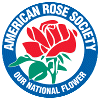Oops! That page can’t be found.
It looks like nothing was found at this location. Maybe try one of the links below or a search?

ARS Facebook page |
Temecula Valley Rose SocietyAn Affiliate of the American Rose Society
February 2018
|
 |
President's Messageby Rebecca Weersing E
xploring gardens of all types will be a pleasure that I hope we will all indulge in this year. What better way to start our garden explorations than with Descanso Gardens, known particularly at this time of year for their camellias, tulips, irises, lilacs, cherry trees, clivia and daffodils. The best bloom period is from the end of February to the March. Our plan will be to leave Rose Haven at 8:30 am, arriving at Descanso by 11 am. We can tour the gardens, have lunch and shop to our hearts content. If we want to go on the 3rd Tuesday (either February 20th or March 20th) entrance is free. On other days the entrance fee is $9.00 for general admission and $6.00 for seniors 65 and over. Think about (1) if you would like to go and (2) the date for us to go. E
xploring gardens of all types will be a pleasure that I hope we will all indulge in this year. What better way to start our garden explorations than with Descanso Gardens, known particularly at this time of year for their camellias, tulips, irises, lilacs, cherry trees, clivia and daffodils. The best bloom period is from the end of February to the March. Our plan will be to leave Rose Haven at 8:30 am, arriving at Descanso by 11 am. We can tour the gardens, have lunch and shop to our hearts content. If we want to go on the 3rd Tuesday (either February 20th or March 20th) entrance is free. On other days the entrance fee is $9.00 for general admission and $6.00 for seniors 65 and over. Think about (1) if you would like to go and (2) the date for us to go.
Membership Renewal Now DueThe Temecula Valley Rose Society Board and committee members are planning a great new year for you filled with special events, informative meeting speakers and exciting day trips in 2018. Your support is needed at this time by paying your membership dues as soon as possible. A Single Membership is $25.00, Family Membership is $30.00, and a lifetime membership is $250.00. A membership renewal form is available here. Please bring your dues to the next meeting or mail your membership dues to: Vice President MembershipTemecula Valley Rose Society PO Box 890367 Temecula, CA 92589-0367 A Rose By Any Other Name ... Fourby Jim MossContinuing with our discussion of the word "Rose" with connection to names of people whose names or nicknames refer to this flower. With reference to floral names, Rose leads the pack. We know of many people whose names are Iris, Fern, Hyacinth, Lily, Poppy, Violet and many others. But no floral name comes anywhere close to the popularity of "Rose". I'm sure that most of you know people who bear the name Roseann, Rosemary, or just plain Rose. However this is just the tip of the Rose iceberg. Among the more noted ladies who have names referring to our flower are Rose Kennedy, the mother of JFK, RFK and Ted Kennedy; Rosemarie, a singer and entertainer of the 1950's and 60's; And not to forget "Tokyo Rose", who was not just one person but several Japanese ladies who spoke perfect English and who used their skills for the purposes of radio broadcasting propaganda to influence American fighting men. This ploy obviously did not work. Also during World War II who can forget Rosie the Riveter, a shining example of the unity of our citizens for the war effort. There have also been men who have the name Rose, but few come to mind other than Pete Rose, a baseball player of dubious reputation regarding gambling on sports events. I personally knew a fellow Airman in the Air Force, Levi Rose who reportedly was killed during the Viet Nam war. This line of thought could continue with numerous references to people who are named Rose, but you get the idea. Rose is the predominate floral name for a whole lot of people, great and small. Next month we will look at the Rose with references to religion. Until then... Grocery Cards Benefit TVRS Dear Members: I trust that you have made a determined effort to use Stater Bros. Scrip/Gift Cards for your everyday normal purchases. Even in these financially difficult times we all must eat. Purchasing a $100 Scrip Card will let you spend $100 for groceries at Stater Bros. There is no extra expense or donation coming out of your pocket and the Rose Society will get a $6.00 donation for the upkeep of the Garden. Your support is greatly appreciated. Email Ann Coakes to order Scrip Cards, or phone 951 693-5635.
Dear Members: I trust that you have made a determined effort to use Stater Bros. Scrip/Gift Cards for your everyday normal purchases. Even in these financially difficult times we all must eat. Purchasing a $100 Scrip Card will let you spend $100 for groceries at Stater Bros. There is no extra expense or donation coming out of your pocket and the Rose Society will get a $6.00 donation for the upkeep of the Garden. Your support is greatly appreciated. Email Ann Coakes to order Scrip Cards, or phone 951 693-5635.
|
Member Meeting ProgramLOOK HERE --> 2018 Programs & Events: Click hereDate: Thursday, February 15 Time: 10:00 a.m. to 1:00 p.m. See our new meeting schedule here. Place: Temecula Library, Community Room (30600 Pauba Rd., Temecula) Program Member Panel: : Jim & Laurie Moss, Virginia Boos, Betty Dixon, Dan Wycoff, and Phyllis Bettelheim Topic: Book Study "Chasing the Rose: An Adventure in the Venetian Countryside" by Andrea di Robilant Back cover praise by Jhumpa Lahiri: A light buffet luncheon will be served at 11:30. Guests are welcome. February Birthdays & New Members
Rose Haven Gardenby Bonnie Bell
Our January rose pruning class with Virginia Boos was extremely successful. An attentive group watched Virginia's demonstration and then everyone grabbed their gloves and clippers and began their own pruning, clipping here, there, and everywhere. Thank you to Virginia, Roy, and Brenda in making this such and enjoyable activity. The photos show before and after results of the pruning. A group of us finished pruning the driveway and climbing roses thanks to Dan, Ben, Phyllis, Katherine and her dad Fred. It's so nice to have that large area completed. Anytime you would like to join us our pruning days are Wednesday and Saturday mornings and there are plenty of roses needing attention.
Our next garden committee meeting is Wednesday, February 28th at 10:00 AM. We will discuss garden improvements, projects, signage, and special events. All members are invite to attend. The address to the garden is 30592 Jedediah Smith Road, Temecula. Rose Haven garden is at 30592 Jedediah Smith Rd. in Temecula. |
Rose Care FUNdamentalsby Frank Brines, Master Consulting Rosarian N
ature lies fallow in winter in preparation for the new year. All life needs rest in order to grow with greater strength. Winter is the time of withdrawal that precedes renewal. But now it's time to take a few simple steps to get your roses off to a great year! N
ature lies fallow in winter in preparation for the new year. All life needs rest in order to grow with greater strength. Winter is the time of withdrawal that precedes renewal. But now it's time to take a few simple steps to get your roses off to a great year!
There is no magical specific date to prune. According to all accounts and professional rosarians, the proper time is "late winter." This has many meanings-bottom line, you want to prune late enough that there's little risk of frost damage to the tender growth that will emerge from pruning. In the Temecula Valley, last average frost date is March 31, so that means you're probably safe pruning in mid- to late-February. Of course, it's always a gamble. The best advice is to watch the weather. Generally speaking a little later is best when we've had winter rain since the rains are cold and the ground is wetter and colder than usual. Different parts of the yard may have other conditions. A south facing wall backing the plants will be warmer than a shadier area. The composition of the soil will have differing effects. Whether there is still a generous later of mulch can effect soil conditions. After this pruning, you can usually expect a flush of blooms 8 to 12 weeks later, depending on the temperatures during that period-the warmer it is, the shorter the time to blooms. But all things being equal, if you prune in the latter half of February you will likely have blooms for 2017 rose shows scheduled in mid- to late-April. If you would like blooms for a specific date, count backwards approximately 10 weeks from that date. Pruning should be complete on this date. The main reason for the major late-winter pruning is to reset the plants' biological clock. A wake up call to begin a new life cycle-like restarting a factory. The following procedures mostly apply to hybrid teas and floribundas, but are reasonably serviceable for minis. They are not really applicable to climbers, ground cover roses, trailers, or shrub roses-all those types have their own pruning methods. In general, it is recommended that you have good pruning tools and gloves with arm protectors, sharp clean bypass hand pruners, and long handle loppers is recommended. One needs to have a range of pruner sizes handy. Each size has a limit to the diameter thickness for which it is most efficiently used; using too small a pruner on too large a cane can damage both. At minimum, have a pair of loppers and a standard-sized pair of hand pruners that fit your hand size. If you have some older plants with large canes that may need to be removed, a saw is a handy tool to have. All pruners should be kept clean, sharp, and in good repair. Rubbing alcohol is ideal for cleaning pruners, before and during the job. It also helps prevent transmitting diseases from plant to plant, and you can use it as first aid for punctures and scratches to your skin. A good pair of leather gloves are necessary with long sleeves or separate pair of sleeves to protect our arms. Before starting the job, lubricate the moving parts with a little light oil (such as 3-in-1 oil), and make sure they operate without resistance. Sharpen each blade with a small diamond file (available at garden centers), trying as much as possible to match the original bevel of the blade. Every 100 cuts or so, swipe the file over the blade a few times to keep it sharp. If you notice that the pruners are crushing the stems and/or leaving a tail, it's past time to sharpen! To minimize damage to the cane keep this rule in mind; the sharp blade should always face the part that will be left. This will minimize the crushing of the cane or stem as it will be the part that is discarded. This rule works for preparing stems for arranging or putting into a vase. Now, decide what style of pruning you feel comfortable with (Figure 1). I find this works well with the way buds are distributed along the cane. Buds are found in the "axil" where a leaf meets the cane; leaves spiral around the cane at about 1.5" intervals. This places outward-facing buds about 4" apart. If you prune lightly to moderately, and if frost damages the tender young growth, then you can still re-prune to the next bud down. |
 In Southern California our rose bushes can grow quite large, so start with some gross pruning to bring the project down to size. I use loppers to cut every bush down to about 3 feet high. This lets you examine the structure of the bush, and to use your hand pruners to more easily remove canes that are twiggy, dead, crossing other canes, or passing through the center of the plant. Also remove old leaves as you go along so you can easily see the structure of the plant. After removing all that stuff from the interior of the bush you can do the final pruning. Attempt to leave a domed top to the degree possible so the plant will bush out in a pleasing, balanced manner. There are two kinds of cuts you will make. Some cuts remove the entire branch; these cuts are made flush with the surface of the parent cane. Other cuts simply shorten a cane. It is important to position your pruners so you minimize damage to the plant. Take a look at your pruners and notice that they have a sharp cutting blade (which slices through the cane), and a dull curved non-cutting blade (which holds the cane in place during the cut). These are called bypass pruners, the only type recommended. Position your pruners so the non-cutting blade is in contact with the portion of the cane that will be removed, and the cutting blade is on the side of the cut that will remain on the plant. (See Figure 2.) This will make more sense when you are actually holding the pruners and getting ready to cut! Also, always prune above an outward facing bud with an angled cut. (See Figure 3). 
 A word of caution when pruning: Look for the small nests of hummingbirds, as this is the nesting period for two varieties in our area. Also, if you discover praying mantis egg cases on any branches you remove, find a place to put them where they will be undisturbed and hatch out so you can benefit from the offspring! Be sure to dispose of all cut off material into your green waste bin and put it on the street. Clean the ground thoroughly of all rose debris. Apply a dormant spray to the plants and the soil surface to ward off diseases. Then add 2"-4" of composted mulch to cover the entire garden area. The first fertilizing will be when new growth is about 2 inches long. I recommend lower values of the three elements (Nitrogen [3], Phosphate [4], K Potassium [3]) with slightly higher value for Phosphate. In two weeks begin with heavier feeding every 2 weeks for great blooms or at least monthly. Now would be the best time to asses the irrigation system for any needed repairs while there is no new growth and mulch has not been spread. For more ideas, visit TVRS' Rose Haven garden at 30592 Jedediah Smith Rd., Temecula, as well as our web site at TemeculaValleyRoseSociety.org/index.shtml. Spread the joy of roses! Jump to page top. |
It looks like nothing was found at this location. Maybe try one of the links below or a search?
It looks like nothing was found at this location. Maybe try one of the links below or a search?
It looks like nothing was found at this location. Maybe try one of the links below or a search?